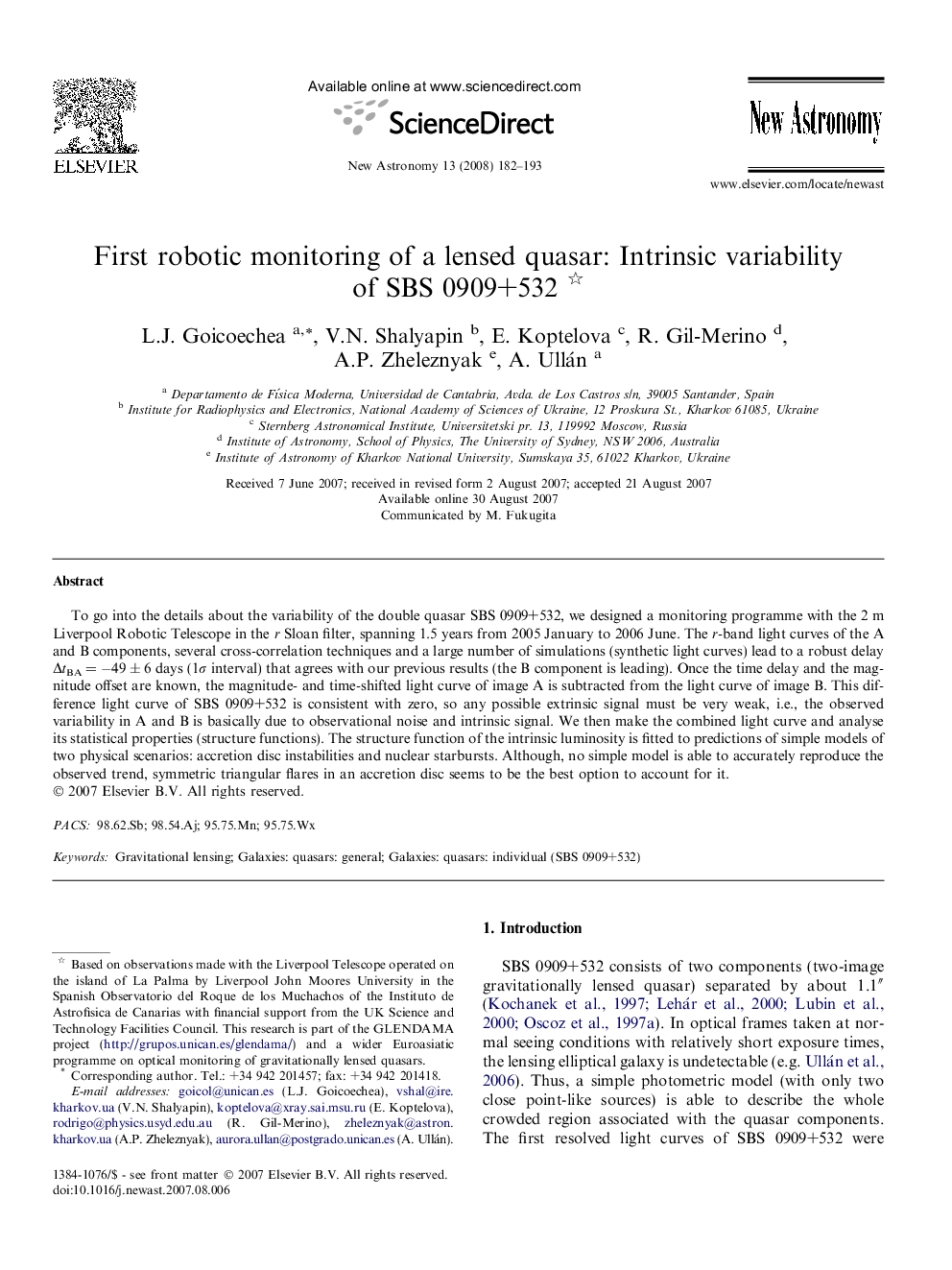| Article ID | Journal | Published Year | Pages | File Type |
|---|---|---|---|---|
| 1779716 | New Astronomy | 2008 | 12 Pages |
To go into the details about the variability of the double quasar SBS 0909+532, we designed a monitoring programme with the 2 m Liverpool Robotic Telescope in the r Sloan filter, spanning 1.5 years from 2005 January to 2006 June. The r-band light curves of the A and B components, several cross-correlation techniques and a large number of simulations (synthetic light curves) lead to a robust delay ΔtBA = −49 ± 6 days (1σ interval) that agrees with our previous results (the B component is leading). Once the time delay and the magnitude offset are known, the magnitude- and time-shifted light curve of image A is subtracted from the light curve of image B. This difference light curve of SBS 0909+532 is consistent with zero, so any possible extrinsic signal must be very weak, i.e., the observed variability in A and B is basically due to observational noise and intrinsic signal. We then make the combined light curve and analyse its statistical properties (structure functions). The structure function of the intrinsic luminosity is fitted to predictions of simple models of two physical scenarios: accretion disc instabilities and nuclear starbursts. Although, no simple model is able to accurately reproduce the observed trend, symmetric triangular flares in an accretion disc seems to be the best option to account for it.
